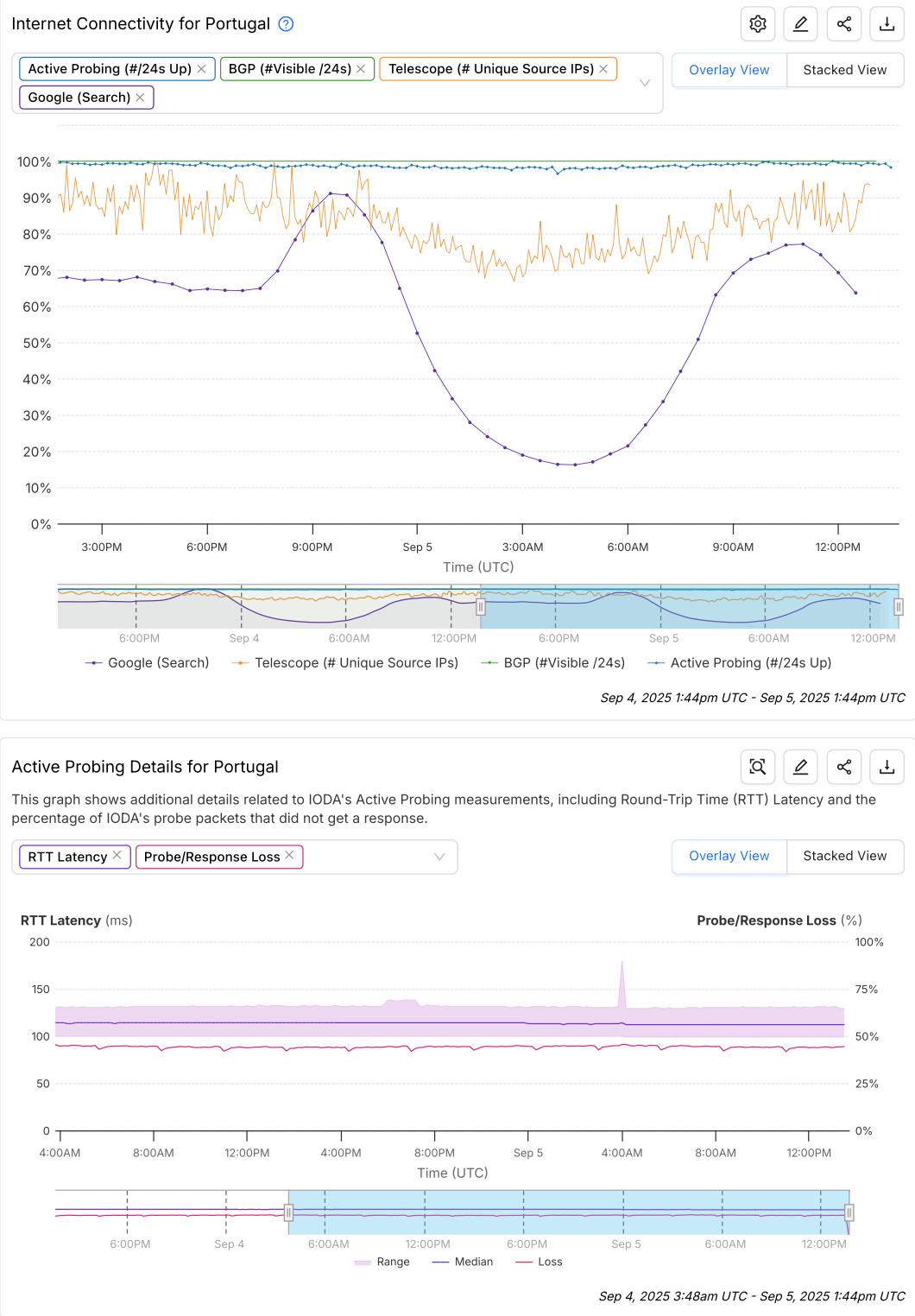Shining a Light on the Slowdown: IODA to Track Internet Bandwidth Throttling

When we think about Internet censorship, Internet shutdowns or blocking are often the scenarios that come to mind. Yet, bandwidth throttling—slowing down Internet connections—is an increasingly prevalent form of censorship. In its most severe forms, throttling can degrade Internet service so dramatically that it becomes practically unusable, while giving the illusion that a connection is available.
Episodes of network throttling have been reported in countries like Russia, Iran, Egypt, and Zimbabwe, and many more, especially during politically sensitive periods such as elections and protests. In some cases, entire regions such as Iran’s Khuzestan province have experienced indiscriminate throttling, regardless of the protocol or specific services in use. Throttling is particularly effective and appealing to authoritarian governments for several reasons: Throttling is simple to implement, difficult to detect or attribute and hard to circumvent.
A major challenge for the research and Internet freedom community has been the lack of tools that provide continuous, automated monitoring and detailed characterization of throttling—especially when it affects entire networks rather than just individual apps or services.
To address this gap, IODA’s team is planning a significant expansion of the IODA platform and its supporting infrastructure. The goal is to enable real-time, large-scale measurements that can provide concrete evidence of throttling and shed light on broader patterns of connectivity disruption.
OONI (Open Observatory of Network Interference) has long focused on measuring the blocking and throttling of access to specific apps and services (e.g., Twitter, Instagram, Facebook). Our approach with IODA is designed to complement OONI’s, focusing on detecting widespread throttling that impacts all users or traffic within a particular region or operator, regardless of protocol.
Enhancing Throttling Detection: IODA’s Technical Objectives
IODA to Leverage Packet Delay and Loss Metrics IODA monitors Internet connectivity using active probing—sending ICMP “ping” packets across vast swathes of the IPv4 address space. Traditionally, IODA relies on determining whether at least one host within a certain subnet responds to these probes to judge availability. However, this methodology doesn’t detect severe throttling, since even a throttled network might respond to pings—albeit with much worse performance.
To overcome this, the IODA team extracted and analyzed round-trip time (RTT) delays and packet loss rates from IODA’s continuous probing data. Notably, these metrics have been collected but largely discarded in the past, despite their potential value for identifying the onset and intensity of throttling.

The Data Challenge: Efficient, Scalable Storage Capturing and retaining every RTT and packet loss measurement is impractical: for Iran alone, more than 4.3 billion RTT samples are generated daily. Thus, a key part of IODA's work involved developing new methods for:
- Summarizing RTT & Loss Distributions: Efficiently representing ranges and distributions of key metrics without overwhelming storage resources.
- Granular Analysis: Enabling insights at geographic or organizational levels (e.g., by country, region, or network operator/ASN) over short time periods.
- Integration with the Data Pipeline: Feeding these summaries into IODA’s backend for visualization and downstream analysis.
This involved an update to the Trinarkular software (a component of IODA) to generate these summaries and handle the new metrics, ensuring the system remains both comprehensive and scalable.
The Road Ahead for IODA By expanding IODA’s capabilities, our objective is to empower researchers, Internet freedom advocates, journalists and policymakers to systematically track throttling as a form of censorship and distinguish it from other types of connectivity disruptions, such as infrastructure failures or transit provider changes. Through close collaboration with OONI and others in the Internet measurement community, we aim to build a clearer, data-driven picture of how and when throttling is used to suppress online freedoms worldwide.
Stay tuned for updates and in-depth case studies as this critical work unfolds on IODA’s platform.
This effort was led by Senior Research Scientist Dr. Zachary Bischof, Associate Professor Dr. Alberto Dainotti, and Software Developer Shane Alcock.
